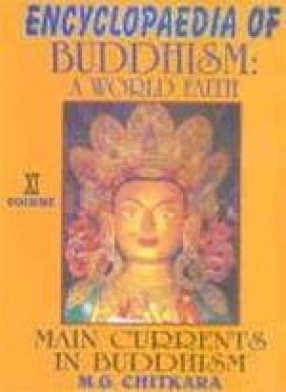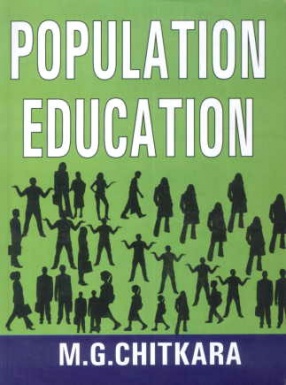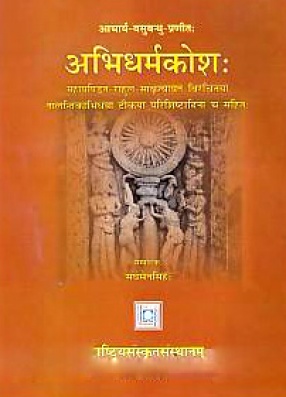The most widely known aspect of Hindu mysticism, beginning from the Vedas to the Upanishads that ultimately blossomed into Vedantic philosophy of Sunyata; (emptiness) and Tantrayana the aphoristic Yog Shastra of Patanjali. He has also tried to enumerate the conceptual tenets of Hinayana the original text of Buddhism now known as Theravada, and also Mahayana Buddhism, which his holiness the 14 Dalai Lama has termed as ‘Democratic religion’. These three scholars of thoughts namely: Hinayana, Mahayana and Tantrayana are virtually the exposition of Sutra and Tantra contained in the three Pitakas i.e. Vinaya-Code of conduct, Swatantra-meditation and Abhidhamma-Philosophical discourse. Together termed as Dhamma and enunciated by Lord Buddha at the behest of his three chief disciples: Ananda, Modgalyana and Sariputra. The author has thus dilated over the vast and complex dialectics of Buddhist and spelt out the reason for its popularity as a world faith, its significance and peculiar appeal to the modern world, thereby enabling transformation of discontent in understanding. Furthermore, the book apparently is for general readership. At the same time, it offers a key to our understanding of various doctrines of Buddhism and their synthetic interpretation; with a mystic search mirroring the psychic depth of the human soul or consciousness—that actually underlies the broad, deep and main currents of Buddhism. Tamas is the Indian word for the principle of inertia of consciousness and force: a consciousness dull and sluggish and incompetent in its play is said to be tamasic; a force, a life-energy that is indolent and limited in its capacity, bound to a narrow range of instinctive impulses, not developing, not seeking farther, not urged to a greater kinetic action or a more luminously conscious action, would be assigned to the same category. The animal, in whom there is this less developed force of consciousness, is prior in creation; the more developed human consciousness, in which there is a greater force of kinetic mind-energy and light of perception, is a later creation. The Tantra speaks of a soul fallen from its status passing through many lacs of births in plant and animal forms before it can reach the human level and be ready for salvation. Here, again, there is implied the conception of vegetable and animal life forms as the lower steps of a ladder, humanity as the last or culminating development of the conscious being, the forms which the soul has to inhabit in order to be capable of the spiritual motive and a spiritual issue out of mentality, life and physically. This indeed the normal conception, and it recommends itself so strongly both to reason and intuition that it hardly needs debate, the conclusion is almost inescapable.
Encyclopaedia of Buddhism: A World Faith : Main Currents in Buddhism (Volume XI)
In stock
Free & Quick Delivery Worldwide
reviews
Bibliographic information
Title
Encyclopaedia of Buddhism: A World Faith : Main Currents in Buddhism (Volume XI)
Author
Edition
1st ed.
Publisher
ISBN
8176481904
Length
xxv+745p.
Subjects








There are no reviews yet.